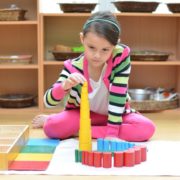The Use of Uninterrupted Work Periods in Montessori
One of the main principles of the Montessori approach to education is the use of uninterrupted work periods. In these periods of time, students are able to work through various tasks at their own pace. No matter which age group a child is in or what concept they are working on, each child is given uninterrupted work periods. Through Dr. Maria Montessori’s extensive research, she discovered several benefits to these uninterrupted work periods.
Learning at Their Own Pace
Every child learns differently. For example, a concept that might come naturally to one child, could take a different child twice as long to understand. If a child is confused about a lesson and the teacher simply rushes through it, the child might feel stressed and discouraged. At Silverline Montessori, we understand that some children need more time to master a subject, which is why we allow our students to work at their own pace. During their work period, children are able to focus on their own individual tasks for as long as they want, without fear that the other students will finish the task before them and leave them behind.
More Meaningful Work
Giving children a set period of time to work on their chosen lessons and tasks helps them produce more meaningful work. When students know that they will be leaving the classroom soon for an activity such as art or physical education, they tend to focus on easy “busywork” in order to make the time go by faster. This leaves students unable to concentrate, which can be detrimental to their learning. However, when a child knows that they have three uninterrupted hours to do their work, they are able to delve deeper into tasks and focus on important learning skills, such as critical thinking and problem solving.
Develop a Love of Learning
When students are given a large block of time to work, they have the freedom to work on several different tasks. The availability of different options ensures that every child will find a task that they enjoy. Children also have time to become more absorbed in their work and reach a deeper level of understanding. Since there is no pressure to finish a task by a certain time, students will begin to select activities for their own enjoyment and interest. When children enjoy their work, they look forward to going to school every day. Learning becomes exciting and alluring, rather than a boring activity that they feel forced to do. At Silverline Montessori, our mission is to help foster this love of learning.









